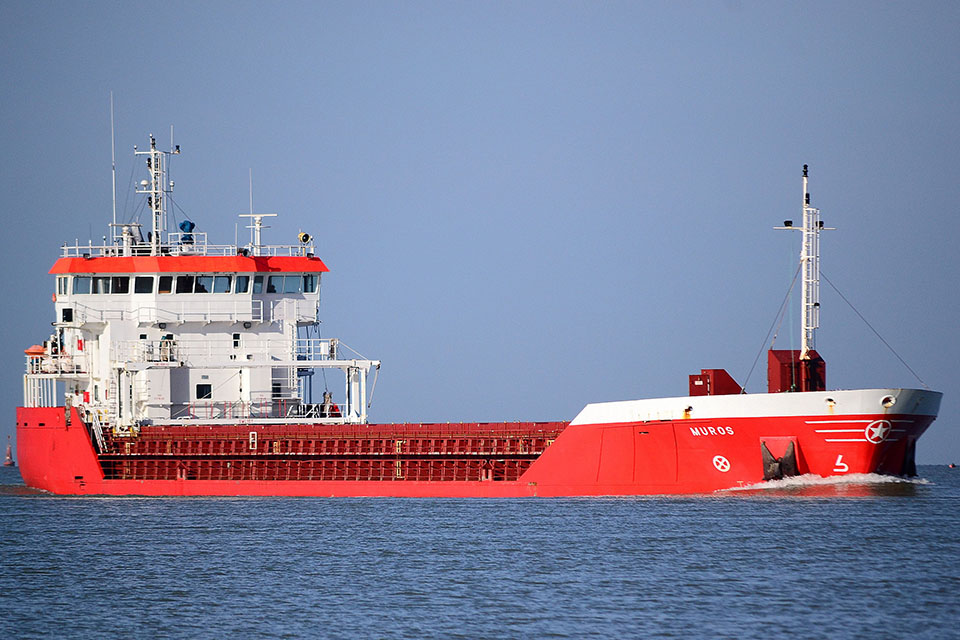Extract of original and revised passage plans (note: all times UTC+1)
Reproduced from Admiralty Charts BA 1406-0 and 1408-0
by permission of the Controller of HMSO and the UK Hydrographic Office
From MarEx
The U.K. Marine Accident Investigation Branch (MAIB) has announced that it is conducting a safety study, in collaboration with the Danish Maritime Accident Investigation Board, to understand why operators are not using ECDIS as envisaged by regulators and the system manufacturers.
General cargo vessel MUROS
ran aground at around 0700 UTC Dec 3 off Happisburgh, Norfolk, UK,
North Sea, while en route from Tees UK to Rochefort France.
Vessel
grounded on a sandbank on even keel, no damages reported, authorities
said she may be refloated ot around 2030 LT with high tide.
The news follows the release of a MAIB investigation report into the grounding of the bulk carrier Muros.
In the early hours of December 3, 2016, the Muros ran aground on Haisborough Sand, eight miles off the Norfolk coast.
Muros bridge layout
When Muros grounded, she was following a passage plan shown on its electronic chart and display information system (ECDIS).
Reconstruction of ECDIS display at 02:50
The MAIB investigation found that:
- The vessel was following a planned track across Haisborough Sand. The passage plan in the ECDIS had been revised by the second officer less than three hours before the grounding and it had not been seen or approved by the master.
- A visual check of the track in the ECDIS using a small-scale chart did not identify it to be unsafe, and warnings of the dangers over Haisborough Sand that were automatically generated by the system’s ‘check route’ function were ignored.
- The second officer monitored the vessel’s position using the ECDIS but did not take any action when the vessel crossed the 10-meter safety contour into shallow water.
- The effectiveness of the second officer’s performance was impacted upon by the time of day and a very low level of arousal, and she might have fallen asleep periodically.
- The disablement of the ECDIS alarms removed the system’s barriers that could have alerted the second officer to the danger in time for successful avoiding action to be taken.
Muros’s passage plan on ENC GB300106
The MAIB has recently investigated several grounding incidents in which the way the vessels' ECDIS was configured and utilized was contributory.
There is increasing evidence to suggest that first generation ECDIS systems were designed primarily to comply with the performance standards required by the IMO, as these systems became a mandatory requirement on ships, with insufficient attention being given to the needs of the end user, states the report.
“As a consequence, ECDIS systems are often not intuitive to use and lack the functionality needed to accommodate accurate passage planning in confined waters. This situation has led to seafarers using ECDIS in ways which are at variance with the instructions and guidance provided by the manufacturers and/or expected by regulators.”
Links :
- Gov.uk : the report is available here / Accident Investigation Report 22/2017
- TradeWinds : ECDIS under fire after bulker grounding
- Pulse : Human perception problems of ECDIS electronic chart displays






No comments:
Post a Comment